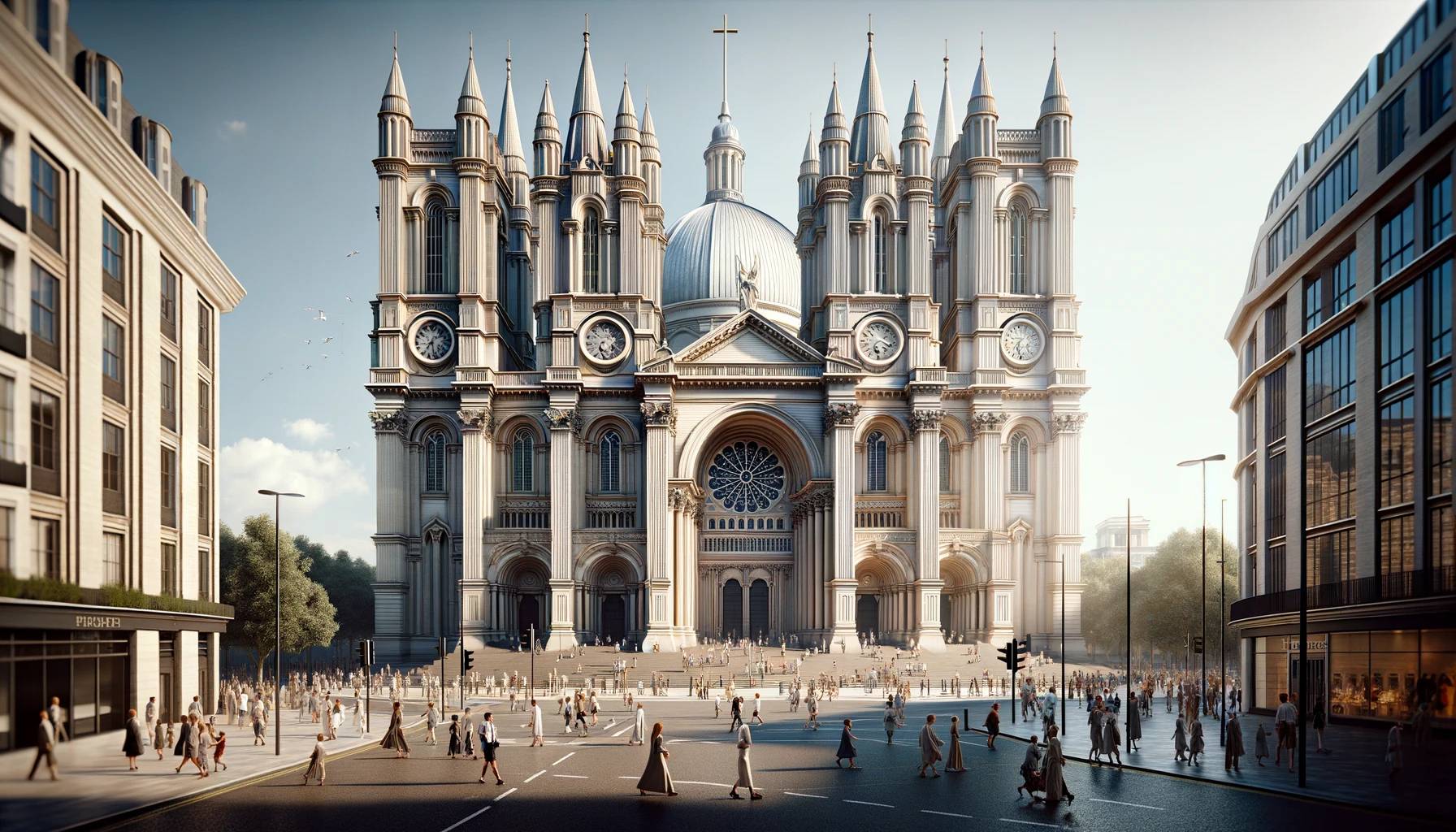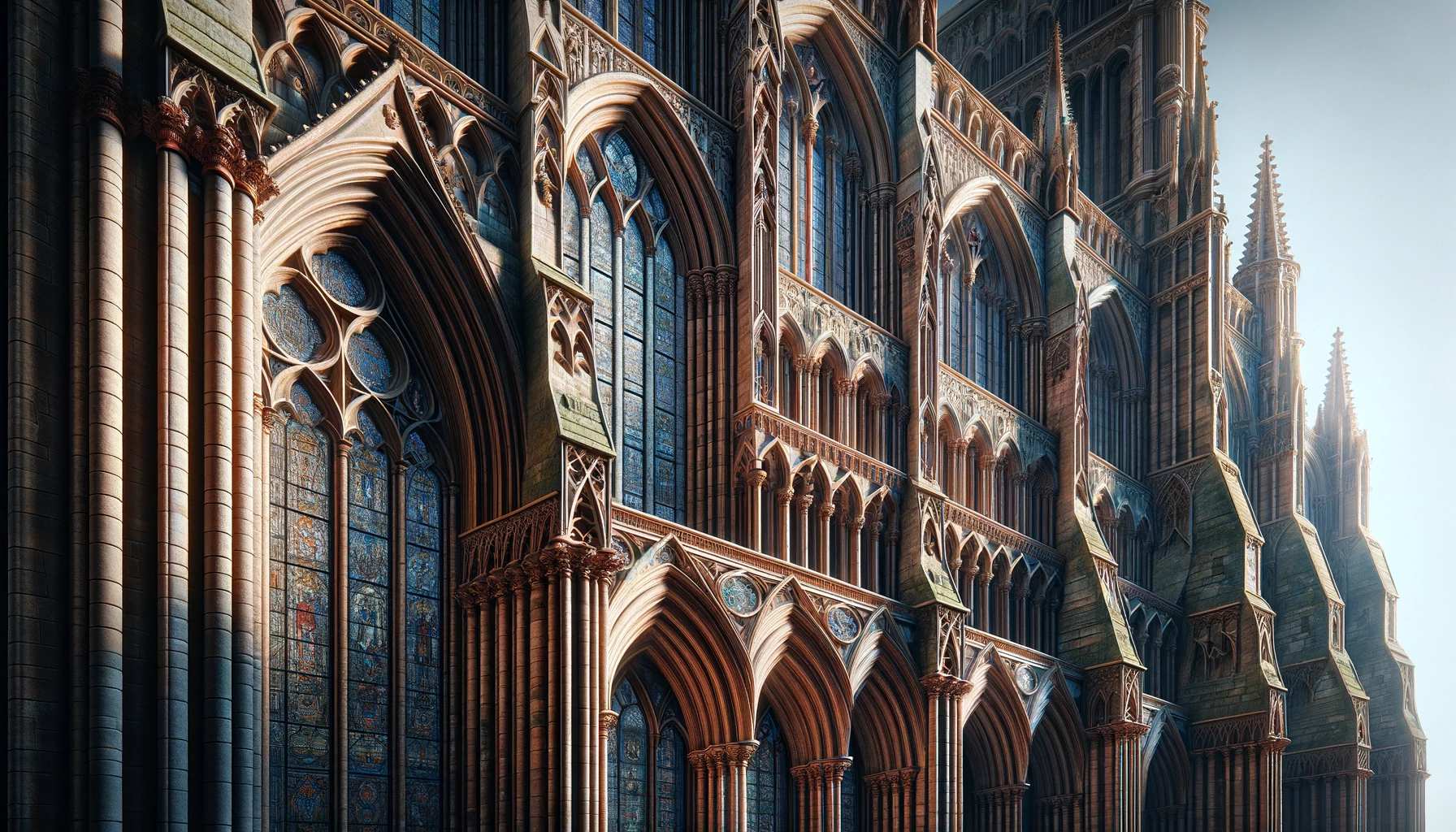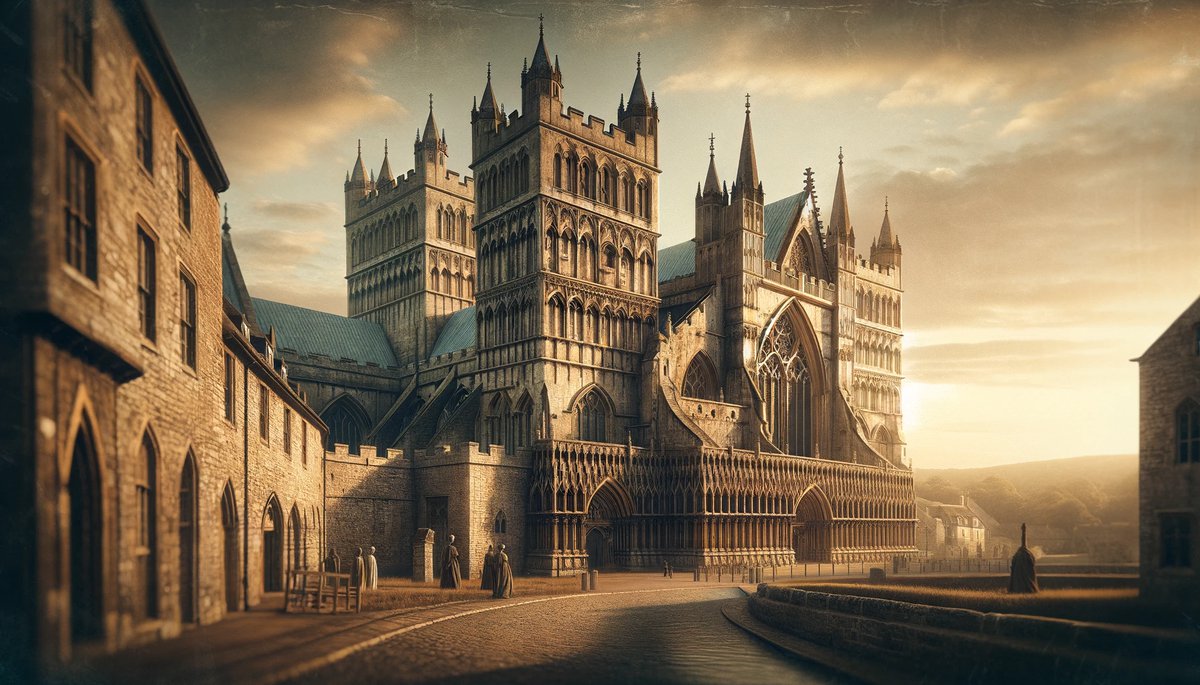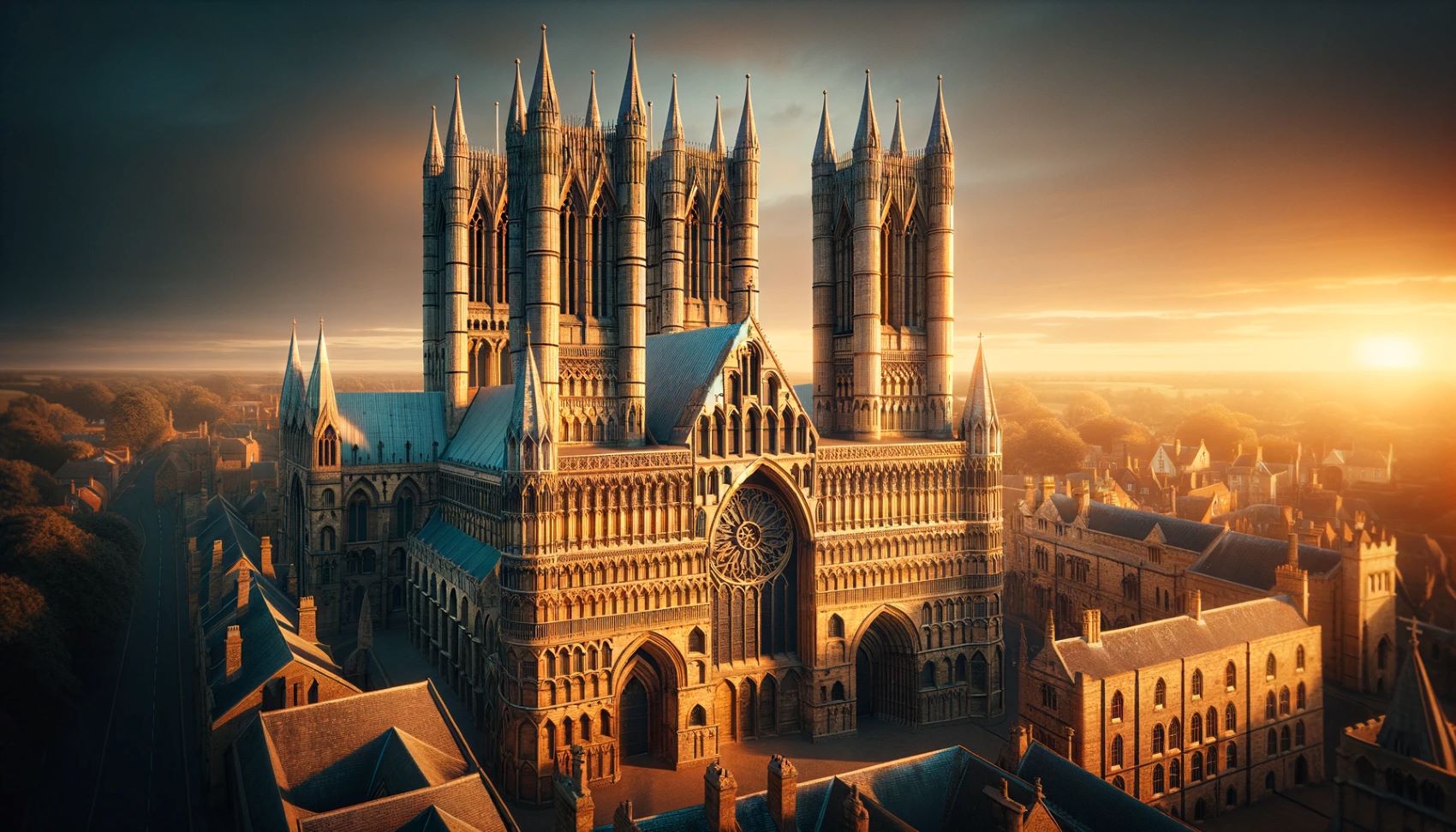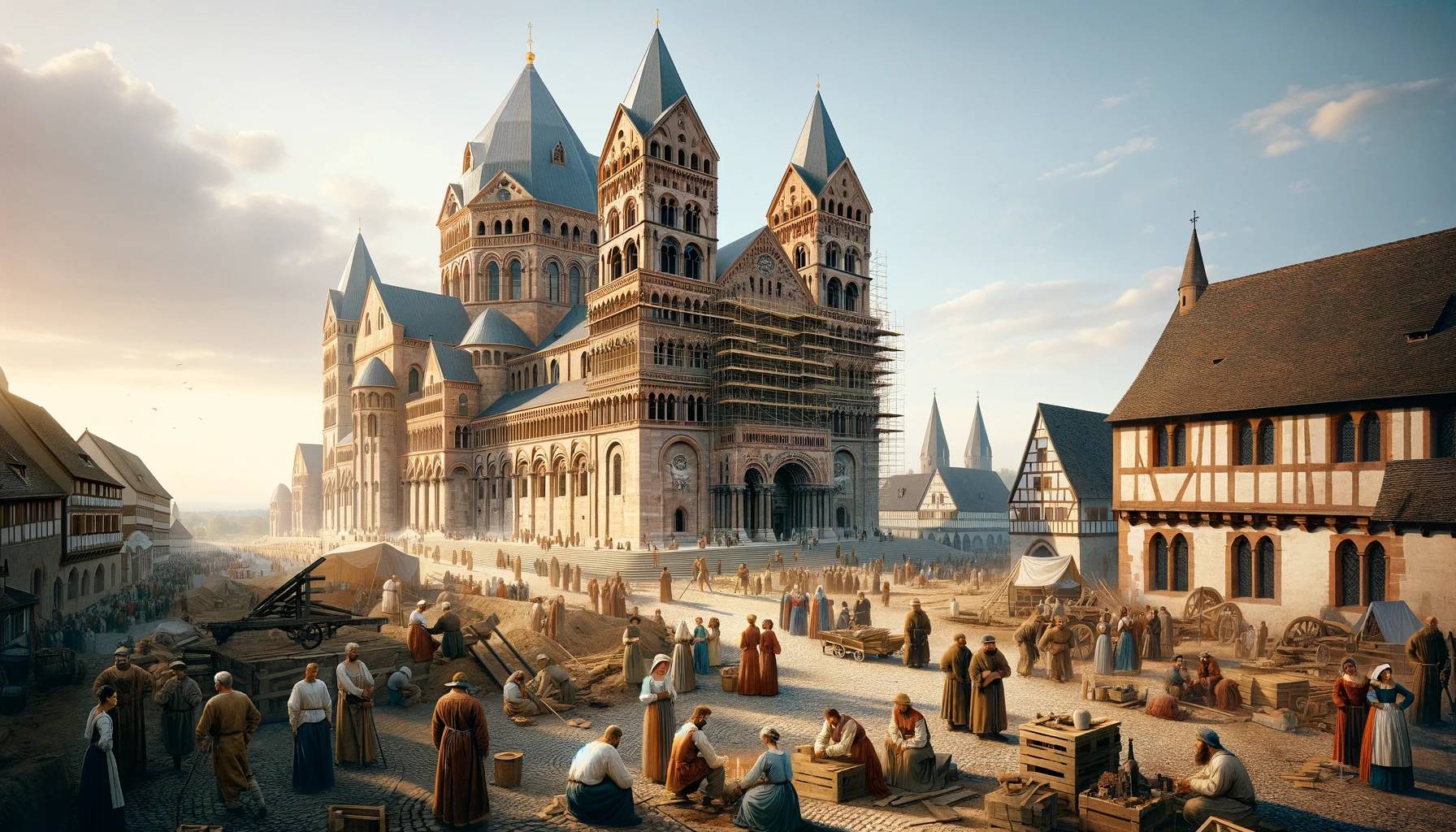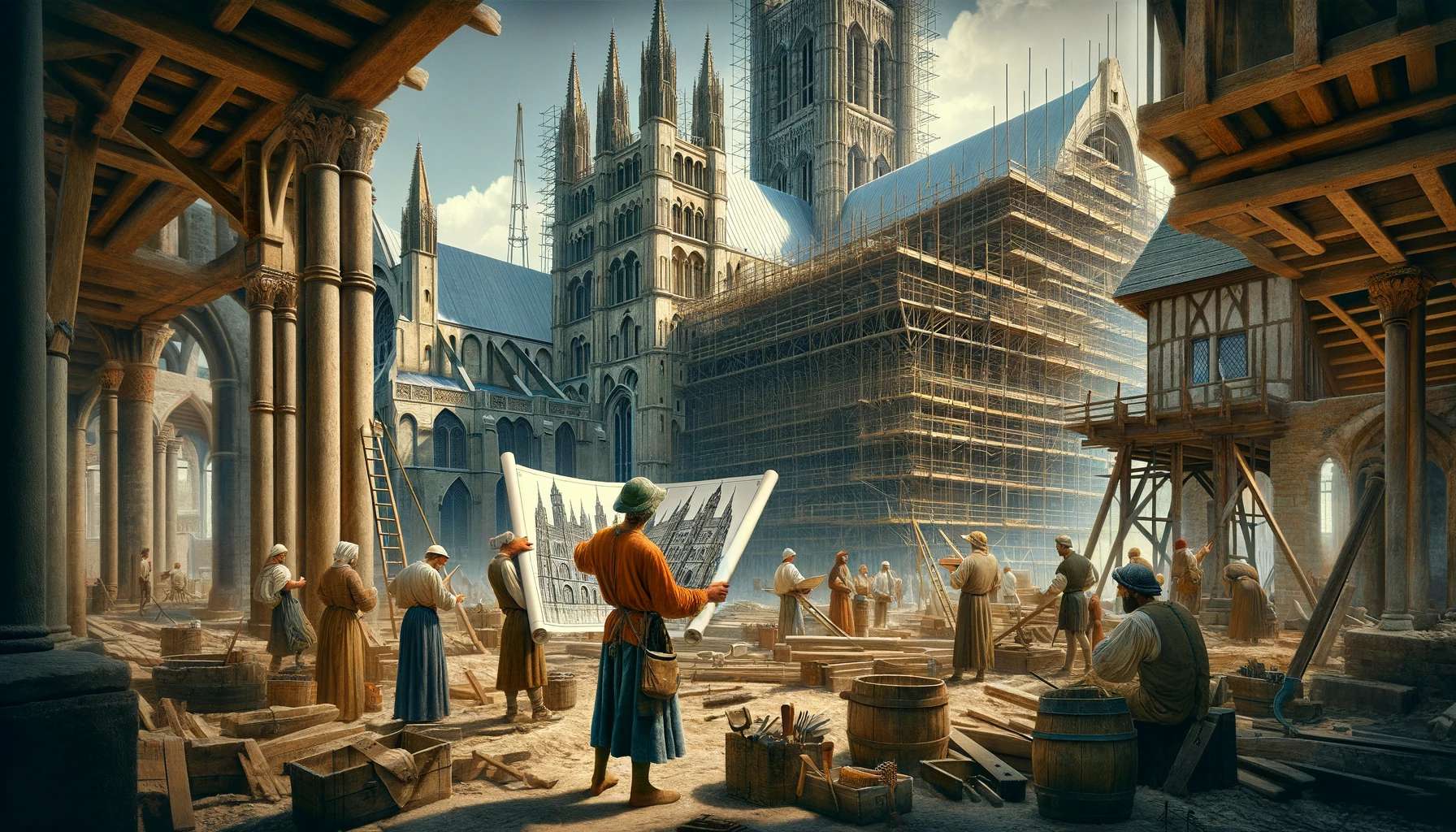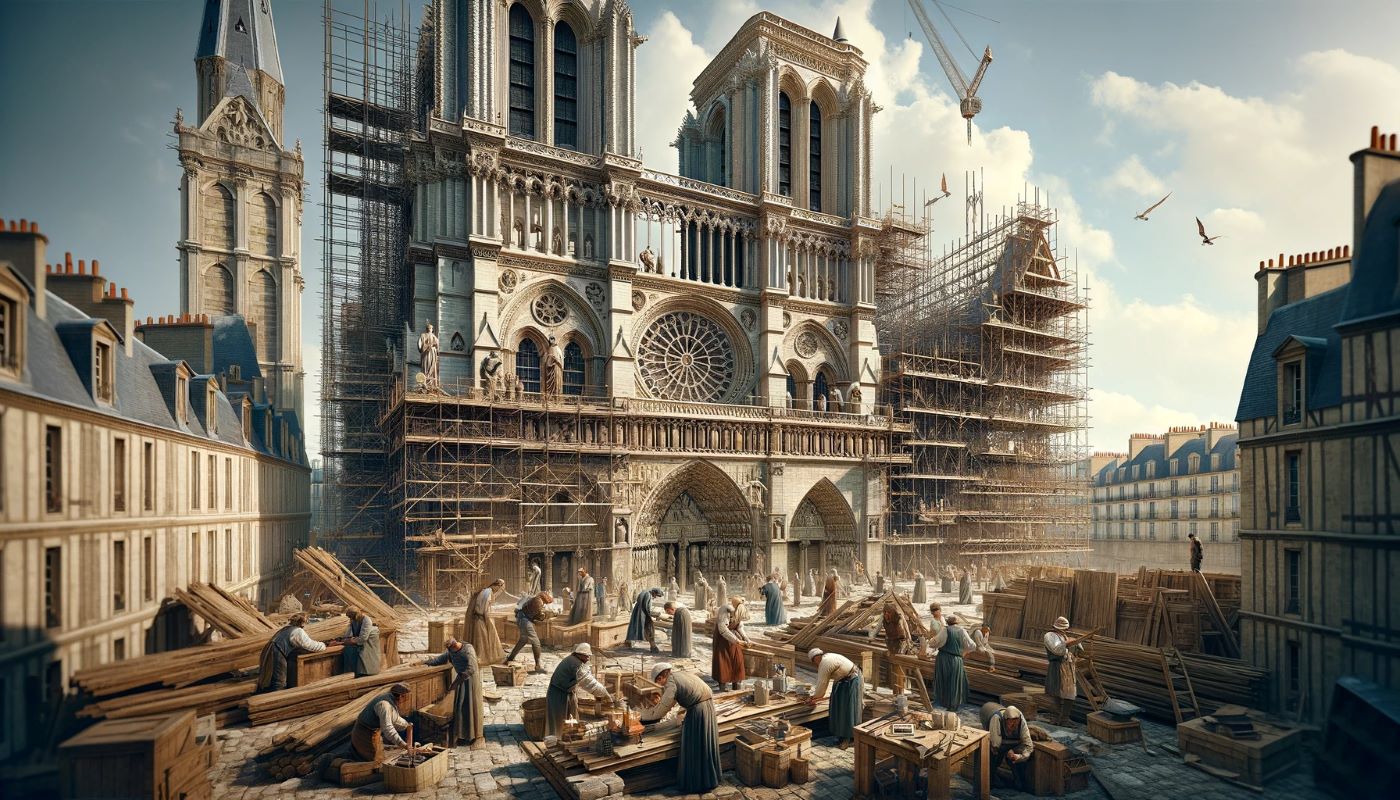Home>Arts and Culture>When Was The Wells Cathedral Built
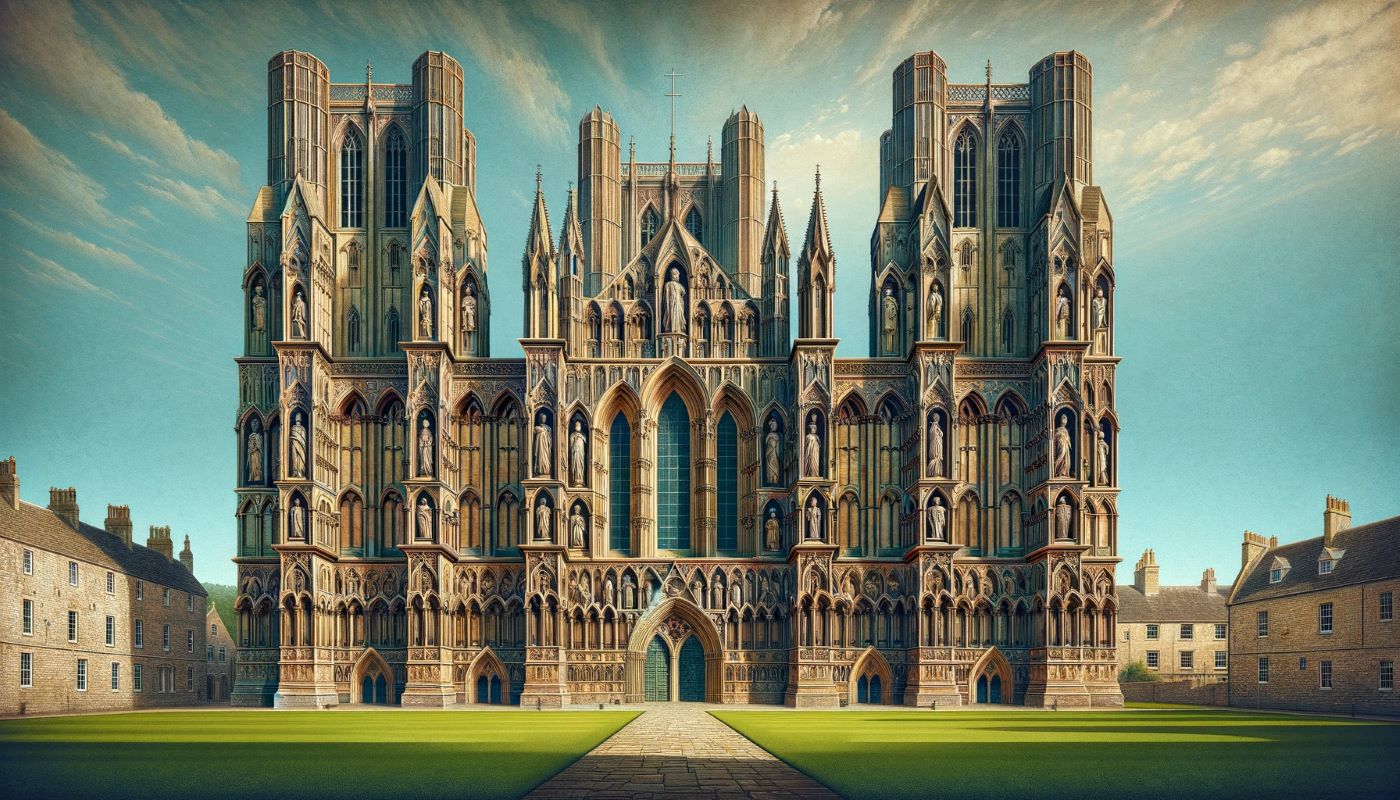

Arts and Culture
When Was The Wells Cathedral Built
Published: February 16, 2024
Jason DeRose, Managing Editor at Christian.net, uses his expertise in religion and journalism to deepen understanding of faith's societal impacts. His editorial leadership, coupled with a strong academic background, enriches the platform’s diverse content, earning him recognition in both journalism and religious circles.
Discover the rich history of Wells Cathedral, a masterpiece of arts and culture, and learn about its construction and significance. Explore the architectural marvel and its impact on the cultural landscape.
(Many of the links in this article redirect to a specific reviewed product. Your purchase of these products through affiliate links helps to generate commission for Christian.net, at no extra cost. Learn more)
Table of Contents
Introduction
Wells Cathedral, a magnificent masterpiece of medieval architecture, stands as a testament to the skill and artistry of its builders. This awe-inspiring structure, located in the charming town of Wells in Somerset, England, has captivated visitors for centuries with its grandeur and historical significance. The cathedral, dedicated to Saint Andrew the Apostle, serves as the seat of the Bishop of Bath and Wells and continues to be a place of worship, pilgrimage, and cultural enrichment.
The cathedral's rich history and architectural splendor draw innumerable visitors each year, offering a glimpse into the past and a profound sense of wonder. As one approaches the cathedral, the intricate details of its facade and the imposing presence of its towers command attention, inviting exploration and contemplation. The interior, adorned with stunning stained glass windows, intricate carvings, and soaring vaulted ceilings, exudes an atmosphere of reverence and tranquility.
Wells Cathedral holds a significant place in the history of English architecture and is renowned for its exceptional Gothic design. The structure's harmonious blend of elegance and strength reflects the ingenuity and craftsmanship of the artisans who brought this vision to life. From its meticulously carved sculptures to the intricate tracery of its windows, every aspect of the cathedral speaks to the dedication and skill of its creators.
Visitors to Wells Cathedral are not only greeted by its architectural grandeur but also by the palpable sense of spirituality and cultural heritage that permeates its hallowed halls. Whether one is drawn to the cathedral for its historical significance, architectural marvels, or spiritual resonance, the experience of standing in the presence of such a venerable edifice is undeniably profound.
As we delve into the history, architecture, and construction of Wells Cathedral, we embark on a journey through time, exploring the enduring legacy of this remarkable structure and the stories it holds within its walls. Join us as we unravel the captivating tale of Wells Cathedral, a timeless symbol of human creativity and devotion.
Read more: When Was The Liverpool Cathedral Built
History of Wells Cathedral
Wells Cathedral, often referred to as the "most poetic of English cathedrals," boasts a rich and storied history that spans over eight centuries. The origins of this architectural marvel can be traced back to the early 12th century when Bishop Ralph of Caen initiated the construction of a new cathedral to replace the existing church at Wells. The cathedral's foundation stone was laid in 1176, marking the beginning of a monumental undertaking that would shape the landscape of English ecclesiastical architecture.
The construction of Wells Cathedral unfolded over several decades, with each phase reflecting the prevailing architectural styles and the evolving vision of its builders. The cathedral's completion in the 14th century marked the culmination of a remarkable feat of medieval craftsmanship and engineering. Throughout its history, the cathedral has weathered periods of prosperity and adversity, bearing witness to significant events and societal changes that have left an indelible imprint on its walls.
One of the defining moments in the cathedral's history occurred in the 13th century when Bishop Jocelin of Wells oversaw the addition of the iconic West Front, adorned with intricate sculptures and statuary. This masterful creation, often hailed as one of the finest examples of medieval sculpture in Europe, stands as a testament to the artistic prowess of the era and the enduring legacy of Wells Cathedral.
The cathedral's enduring significance is further underscored by its status as a center of religious and cultural life in the region. Over the centuries, Wells Cathedral has been a site of pilgrimage, a hub of artistic patronage, and a place of spiritual solace for countless individuals. Its role in the community extends beyond religious observance, encompassing educational initiatives, musical performances, and the preservation of historical artifacts and documents.
Today, Wells Cathedral stands as a living testament to the resilience of human endeavor and the enduring power of architectural innovation. Its rich tapestry of history, from the grandeur of its construction to the challenges it has overcome, continues to inspire awe and reverence in all who behold it. As we delve into the annals of Wells Cathedral's past, we uncover a narrative that intertwines with the broader tapestry of English history, offering insights into the cultural, artistic, and spiritual dimensions of medieval society.
The history of Wells Cathedral is a testament to the enduring legacy of human creativity and devotion, inviting us to contemplate the profound impact of this architectural masterpiece on the fabric of English heritage.
Architecture and Design
The architecture and design of Wells Cathedral stand as a testament to the ingenuity and artistic vision of its creators. As one gazes upon the cathedral's exterior, a striking display of Gothic magnificence unfolds before the eyes. The West Front, adorned with an array of sculpted figures and intricate details, serves as a captivating introduction to the architectural splendor that awaits within.
The cathedral's design embodies the quintessence of Gothic architecture, characterized by its soaring spires, pointed arches, and ribbed vaults. The use of flying buttresses not only lends structural support but also adds a sense of ethereal grace to the exterior, accentuating the verticality and grandeur of the edifice. The intricate tracery of the windows, with their delicate stone mullions and vibrant stained glass, bathes the interior in a kaleidoscope of light, creating an atmosphere of transcendent beauty.
Upon entering the cathedral, visitors are greeted by the awe-inspiring sight of the nave, flanked by graceful columns that ascend towards the heavens. The ribbed vaulting overhead, adorned with intricate carvings and bosses, creates a sense of celestial harmony, evoking a profound sense of wonder and reverence. The Lady Chapel, with its elegant proportions and exquisite detailing, stands as a testament to the devotion and skill of the craftsmen who brought this sacred space to life.
The architectural elements of Wells Cathedral are not merely feats of engineering and design; they are expressions of faith and artistic excellence. The meticulous carvings that adorn the choir stalls, depicting scenes from biblical narratives and medieval life, offer a glimpse into the cultural and spiritual milieu of the era. The chapter house, with its octagonal design and sculpted capitals, exudes a sense of serenity and contemplation, inviting visitors to immerse themselves in the tranquility of its surroundings.
The cathedral's architecture and design transcend the boundaries of time, inviting us to marvel at the enduring legacy of medieval craftsmanship and the enduring power of human creativity. As we stand within the hallowed halls of Wells Cathedral, we are reminded of the profound impact of architectural innovation on the human spirit, inspiring awe and reverence for generations to come.
Construction of Wells Cathedral
The construction of Wells Cathedral stands as a testament to the remarkable skill and dedication of the artisans and laborers who brought this architectural marvel to fruition. Initiated in 1176 under the patronage of Bishop Reginald Fitz Jocelin, the cathedral's construction marked the beginning of an ambitious endeavor that would span several decades. The foundation stone was laid, and the meticulous planning and execution of the project commenced, laying the groundwork for what would become a crowning achievement of medieval architecture.
The cathedral's construction unfolded in multiple phases, each reflecting the prevailing architectural styles and the evolving vision of its builders. The early stages saw the establishment of the choir, transepts, and the eastern portions of the nave, showcasing the burgeoning Gothic style that would come to define the cathedral's aesthetic. The meticulous craftsmanship and innovative engineering employed in these initial phases set the stage for the grandeur that would unfold in the ensuing years.
As the construction progressed, the cathedral's iconic West Front emerged as a crowning achievement of medieval sculptural artistry. The intricate sculptures and statuary adorning the facade, depicting biblical narratives, saints, and symbolic motifs, stand as a testament to the artistic prowess of the era and the enduring legacy of Wells Cathedral. The completion of the West Front marked a pivotal moment in the cathedral's construction, solidifying its status as a masterpiece of Gothic architecture.
The cathedral's soaring spires, ribbed vaults, and delicate tracery of its windows gradually took shape, each element contributing to the ethereal beauty and structural integrity of the edifice. The dedication and perseverance of the craftsmen and laborers, often toiling under arduous conditions, underscore the monumental effort required to bring such a grand vision to life.
The culmination of the cathedral's construction in the 14th century marked the realization of a monumental feat of medieval craftsmanship and engineering. The completion of the central tower, the chapter house, and the cloisters added further dimensions to the cathedral's architectural splendor, cementing its status as a beacon of artistic and spiritual excellence.
The construction of Wells Cathedral stands as a testament to the enduring legacy of human creativity and devotion, inviting us to contemplate the profound impact of this architectural masterpiece on the fabric of English heritage.
Renovations and Additions
The enduring legacy of Wells Cathedral is not solely rooted in its medieval origins but also in the ongoing efforts to preserve and enhance this architectural treasure for future generations. Over the centuries, the cathedral has undergone numerous renovations and additions, each contributing to its structural integrity, aesthetic appeal, and historical significance.
One of the most notable periods of renovation occurred in the 19th century when the renowned architect Sir George Gilbert Scott undertook extensive restoration work on the cathedral. Scott's meticulous approach aimed to revive the cathedral's original medieval splendor while addressing structural issues that had emerged over time. His efforts encompassed the restoration of the West Front's sculptures, the refurbishment of the interior, and the reinforcement of the cathedral's foundations, ensuring its longevity for years to come.
In addition to restoration efforts, Wells Cathedral has seen the addition of significant artistic and architectural elements. The exquisite Jesse Window, a magnificent example of medieval stained glass, was installed in the 14th century, depicting the genealogy of Christ in vibrant hues and intricate details. This stunning masterpiece continues to captivate visitors with its timeless beauty and spiritual symbolism, enriching the cathedral's interior with a luminous tapestry of color and narrative.
The 20th and 21st centuries have witnessed further endeavors to preserve and augment Wells Cathedral's architectural heritage. Ongoing conservation projects have focused on safeguarding the cathedral's delicate stonework, preserving its iconic sculptures, and ensuring the structural stability of its vaulted ceilings and spires. These initiatives, guided by a commitment to honoring the cathedral's historical legacy, have upheld its status as a living testament to the enduring legacy of Gothic architecture.
In recent years, the cathedral has embraced contemporary additions that harmonize with its medieval fabric, such as the striking new entrance gate, designed to welcome visitors with a blend of modern elegance and reverence for tradition. These thoughtful enhancements reflect a commitment to honoring the cathedral's past while embracing the evolving needs of its community and visitors.
The ongoing renovations and additions at Wells Cathedral stand as a testament to the enduring spirit of preservation and innovation that continues to safeguard this architectural jewel. As the cathedral evolves to meet the demands of the present while honoring its storied past, it remains a living testament to the timeless allure of Gothic architecture and the enduring legacy of human creativity and devotion.
Read more: Lincoln Cathedral: When Was It Built
Conclusion
In conclusion, Wells Cathedral stands as a timeless testament to the enduring legacy of human creativity, devotion, and architectural innovation. From its humble beginnings in the 12th century to its status as a revered cultural and spiritual landmark, the cathedral has woven a rich tapestry of history, artistry, and resilience.
The cathedral's architectural splendor, characterized by its soaring spires, intricate sculptures, and ethereal stained glass, continues to captivate visitors, inviting them to immerse themselves in the grandeur of medieval craftsmanship. The enduring significance of Wells Cathedral extends beyond its physical presence, encompassing its role as a center of religious worship, cultural enrichment, and historical preservation.
As we reflect on the cathedral's history, from its construction to the present day, we are reminded of the profound impact of architectural innovation on the human spirit. The enduring legacy of Wells Cathedral serves as a bridge between the past and the present, inviting us to contemplate the enduring power of art, faith, and human endeavor.
Visitors to Wells Cathedral are not only greeted by its architectural grandeur but also by the palpable sense of spirituality and cultural heritage that permeates its hallowed halls. Whether one is drawn to the cathedral for its historical significance, architectural marvels, or spiritual resonance, the experience of standing in the presence of such a venerable edifice is undeniably profound.
As we bid farewell to Wells Cathedral, we carry with us the echoes of centuries past, the whispers of artistic mastery, and the enduring legacy of human ingenuity. The cathedral's story, etched in stone and illuminated by the glow of stained glass, continues to inspire awe and reverence, inviting us to contemplate the profound impact of this architectural masterpiece on the fabric of English heritage.
In the heart of Wells Cathedral, amidst the soaring arches and the soft glow of candlelight, we find a timeless sanctuary—a testament to the enduring spirit of human creativity and devotion. As the cathedral stands resolute, weathering the passage of time, it beckons us to ponder the enduring legacy of art, faith, and the unyielding human spirit.
